Blogs of Yesteryear: Selected Highlights from American Pamphlets, 1820-1922
Before there were blogs, there were pamphlets. From the earliest days of American history, pamphlets provided ordinary citizens with the opportunity to comment on contemporary issues. Their subject matter was as broad, and sometimes as provocative, as that of today’s blogs.
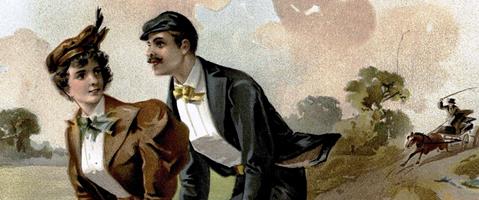
The examples below—from the February 2014 release of American Pamphlets, Series 1, 1820-1922: From the New-York Historical Society—illustrate some of the diverse political, social, and commercial concerns addressed by these small printed works:
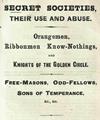
Secret Societies, Their Use and Abuse. Orangemen, Ribbonmen Know-Nothings, and Knights of the Golden Circle. Free-Masons, Odd-Fellows, Sons of Temperance, &c., &c. (1862)
The author describes several secret societies that were extant at the time of the American Civil War. He explores the religious and political animosities that often motivated these groups and sometimes tore them apart.

Report of Benj. H. Latrobe, consulting engineer, on the Troy and Greenfield Railroad and Hoosac Tunnel (1869)
At the time of its construction, the Hoosac Tunnel was the second longest in the world. To this day it is still the longest in North America east of the Mississippi River. Almost 200 people died building it. This report is by the well-known civil engineer Benjamin Latrobe II.
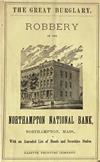
The Greatest Burglary on Record. Robbery of the Northampton National Bank. The Cashier Overpowered at Midnight, Tortured, and Forced to Give the Combinations to the Vault and Safe. Eight Hundred Thousand Dollars in Money and Bonds Stolen. $25,000 Reward (1876)
In 1876 this Massachusetts bank was robbed by a gang of men who swarmed the bank cashier's home in the night, tying up the seven inhabitants and forcing the cashier to provide the bank vaults' combinations. They escaped with over $800,000 in cash and bonds. The author of this highly detailed account observes, "No other event in this region, with the exception of the great reservoir disaster in 1874, has caused so much excitement as this robbery. It has created almost as great consternation as did the opening scenes of the rebellion."
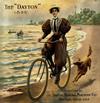
Dayton Bicycles. Manufactured by the Davis Sewing Machine Co., Dayton, Ohio, U.S.A. (1896)
Most of the bicycles in this handsomely produced and illustrated catalog sold for $100, a substantial figure at the turn of the century. Their value is made manifest by the color illustration showing a young man and woman speeding along on one being unsuccessfully pursued by a horse-drawn carriage. It is titled "An Elopement."
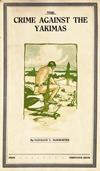
The Crime Against the Yakimas. By Lucullus V. McWhorter (1913)
In his introduction, William E. Johnson, former Chief Special Officer of the United States Indian Service, writes, "As an island is defined as a tract of land entirely surrounded by water, so may an Indian Reservation be described as a tract of land entirely surrounded by thieves." Mr. McWhorter identifies these thieves and details their crimes against the aboriginal people living on the Yakima Indian Reservation in Washington state.

Are All Radicals Insane? By Theodore Schroeder (1921)
Schroeder was a friend and supporter of many people who were considered radicals, including Emma Goldman. In 1902 he was a founder of the Free Speech League, which was formed to combat government censorship, especially as it pertained to political speech and the discussion of sexual behavior. In this pamphlet he debunks the work of psychiatrist Stewart Payton, who had argued that a radical was insane by definition as expressed through his or her actions.
For more information about American Pamphlets, 1820-1922, or to request a trial for your institution, please contact readexmarketing@readex.com.



